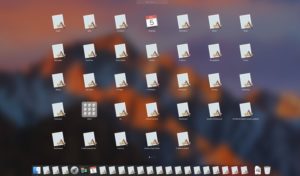What is NextCloud?
 |
Nextcloud is a suite of client-server software for creating and using file hosting services. Nextcloud application functionally is similar to Dropbox. Unlike Dropbox, Nextcloud does not offer off-premises file storage hosting. Nextcloud is free and open-source, which means that anyone is allowed to install and operate it on their own private server devices. |
In contrast to proprietary services like Dropbox, the open architecture allows adding functionality to the server in the form of applications and enables users to have full control of their data. The original ownCloud developer Frank Karlitschek forked ownCloud and created Nextcloud, which continues to be actively developed by Karlitschek and other members of the original ownCloud team.
Source /> Wikipedia
Software Required :
| Equipment Required | Optional | ||
| Raspberry Pi 4 | Case | ||
| SD Card | Raspberry Pi Keyboard | ||
| Ethernet Cable | Mouse | ||
| Power Adapter | |||
| External HDD | |||
| Shop now | |||
Raspbian OS Installation
- Download Raspbian OS from Official Website: raspberrypi.org
- Then write the image to the SD Card using: Etcher
- Now, Boot the Raspberry Pi with this SD Card, Follow the On-Screen Instructions and then open Terminal.
Enabling SSH in Raspbian OS
- By default, SSH is disabled in Raspbian. So, we need to enable it from the desktop.
- Launch the Raspberry Pi Configuration.
Menu –> Preferences –> Raspberry Pi Configuration
- Navigate to the Interfaces tab
- Select Enabled next to SSH
- Click OK.

Enabling SSH in Raspbian OS through Terminal
- Enter sudo raspi-config in a terminal window
sudo raspi-config
- Select Interfacing Options

- Navigate to and select SSH

- Choose Yes–> Ok –> Finish
Enabling SSH in Raspbian OS through Commands
sudo systemctl enable ssh sudo systemctl start ssh
 Apache and PHP Installation
Apache and PHP Installation
Updating and Upgrading Raspbian OS
apt-get update apt-get upgrade
Installing Apache Web Server
apt-get install apache2
- To check the status of Apache Web server, type Raspberry Pi Ip Address in the address bar.

- If we see this screen that means the Apache Web Server is working Fine.
Installing MariaDB DataBase
apt-get install apache2 mariadb-server libapache2-mod-php7.0
Installing PHP Packages
apt-get install php7.0-gd php7.0-json php7.0-mysql php7.0-curl php7.0-mbstring apt-get install php7.0-intl php7.0-mcrypt php-imagick php7.0-xml php7.0-zip
- After that installation will complete the setup. We will restart the Apache Web Server.
Restarting Apache Web Server
service apache2 restart
NextCloud Installation
Navigate to HTML Directory
cd /var/www/html
Downloading and Extracting NextCloud using the Curl command
curl https://download.nextcloud.com/server/releases/nextcloud-15.0.5.tar.bz2 | sudo tar -jxv
- Please, Change the Nextcloud version from its official website.
Creating a Data Directory for NextCloud to save the Information
sudo mkdir -p /var/www/html/nextcloud/data
Providing Control of NextCloud folder to Correct User and Group
sudo chown -R www-data:www-data /var/www/html/nextcloud/
Providing right permissions to the NextCloud DATA folder
sudo chmod 750 /var/www/html/nextcloud/data
- Now the process of NextCloud installation is finished. Now, we can finally move to the NextCloud login process.
- To begin go to your Raspberry Pi’s IP address/nextcloud. For example, In my case:
- Once you type the correct address you will be redirected to NextCloud Login Screen.

- Here you can type your username and password that you want to use as an Admin Account.
- If you want to use the NextCloud from outside your network, we recommend you to choose a strong password.
- Once you are happy with your settings, press the “Finish Setup” button, to finalize the setup process.
- It might take some time to finish the setup. So, please wait and don’t refresh the page.
Access NextCloud from Internet
- To access the NextCloud from Internet, we need to complete 3 steps.
Port Forwarding Setup Dynamic DNS [In case you don't have a Static Public IP Address] Add website to Trusted Domains
Setting up Port Forwarding on Router
- To forward the port on the router, we need to know the IP Address of our router.
- To check the router IP Address we can use the Wireless Network Watcher.
- It will display the router IP Address as shown below.

- Type this IP Address to your browser and it will open the login page for your router.
- Now, you need to enter the username & password and login to your router.
- If you don’t know the username & password of your router you can always ask your ISP.
- For personal routers, you can always check online for default username & password for the router.
- In my case I need to navigate to services and then move to Port Forwarding, Your’s might be different.
- Then you need to forward port 80 and 443, to the Raspberry Pi IP Address.

Setting up Dynamic DNS
- First of all, we need to visit the DUCKDNS website to create a Free Dynamic DNS Domain for us.

- You can use any of the above methods to login to the DUCKDNS website and create a sub-domain for your website.
- Once you logged in then create a sub-domain for your NextCloud and can visit NextCloud by that address.

- For example, in my case, I have created omvpcmac as my subdomain.
- So, I can access it as omvpcmac.duckdns.org.
- You can create 5 subdomains on the Duck DNS account for free.
Add website to Trusted Domains
- To add our website to Trusted Domain’s we need to edit the NextCloud Configuration file.
- We can either use WinSCP and we can use nano command to edit the file.
Edit NextCloud’s Configuration File
sudo nano /var/www/html/nextcloud/config/config.php
- Now, in the configuration file, we need to add our website to the Trusted Domains.
'trusted_domains' => array ( 0 => '192.168.1.73', ),
- In my case, I have added my duckdns.org sub-domain to Trusted Domain.
- So, we need to make another entry by increment the array ID.
'trusted_domains' => array ( 0 => '192.168.1.73', 1 => 'omvpcmac.duckdns.org', ),
- Now we can save and quit out of the file by pressing Ctrl+X then pressing Y and then Enter.
- If you follow the video and the tutorial correctly, your NextCloud should work now.
Add External HDD to NextCloud
- Connect the External HDD to Raspberry Pi
- From the NextCloud Menu select Apps and then enable “External Storage Support“.
- After that, we need to open Putty, log in with root user, and type these commands.
sudo chown -R www-data:www-data /path/to/localdir sudo chmod -R 0750 /path/to/localdir
- You can find the path to Local Drive from File System options in OpenMediaVault.

- Now, you can go ahead and mount your External HDD in NextCloud.
- You need to navigate to “Settings–> Administration–> External Storage“ and configure the path of HDD.

In conclusion
- You are ready to use Nextcloud on your Raspberry Pi.
- If you come across any issues or have some feedback related to this tutorial, Please share your thoughts.
Please check out my other articles:
Did you find us helpful?
| Subscribe our YouTube Channel | |
| Support us on Patreon | |
| Like us on Facebook | |
| Share This Article with others | |



Very interesting subject , appreciate it for putting up. “Wrinkles should merely indicate where smiles have been
Thanks
G’day Harish, very well explained and helped me understand how can I host my own cloud storage. Seeking advice though, as php version has upgraded and names of packages have changed. Can you suggest how can I install for RPi 4?
I will create new fresh guide again. Please wait for it.
could you also please add guide on – if we are already running a RAID on OMV and how to add existing folders in nextcloud ???